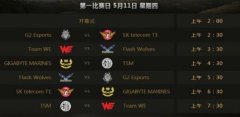一般过去时的用法
A say goes 是一般现在时,A say went 是一般过去时。一般过去时的基本用法:一般过去时表示过去某个时间发生的动作或存在的状态,也可表示过去经常或反复发生的动作。常和表示过去的时间状语连用,如yesterday, last week, last night, in 2003, two days ago等。例如:I got up at 6:30 yesterday. 我昨天6:30起床。My father was very busy last week. 我父亲上周很忙。扩展资料:(1)It's said that+句子意思是:据说,俗话说?(2)As the saying goes 俗话说(3)There is a saying that有一句俗话说(4)There is an old saying that.或者There is a proverb that俗话说,有一句谚语/有一句俗话说参考资料:百度百科:一般过去时
一般过去时的用法?
一般过去时态:
表示过去某一时间所发生的动作或存在的状态。谓语动词要用一般过去式。
时间状语:经常与yesterday(昨天), last week(上周), last month(上个月), last year(去年), two months ago(两个月前), the day before yesterday(前天),in 1990 (在1990年), in those days (在那些日子里)等表示过去的时间状语连用。
如: I was born in 1990. (我出生在1990年)。
When did you go to the park? (你是什么时候去的公园)。
I went to the park last week. (我是上周去的公园)
在上面的句子中第一句属于be动词的一般过去时态;第二句和第三句属于实义动词的一般过去时态。
1. Be 动词的一般过去时态
在没有实义动词的句子中使用be动词, am is 的过去式为was; are的过去式为were.
构成:肯定句:主语+was (were) +宾语
如:I was late yesterday. (昨天我迟到了。)
否定句:主语+was (were) +not+宾语
如:We weren't late yesterday. (我们昨天没迟到)
疑问句:Was (Were) +主语+宾语
如: Were you ill yesterday? (你昨天病了吗?)
肯定回答: Yes, I was. (是的,我病了。)
否定句: No, I wasn't. (不,我没病。)
特殊疑问句: 特殊疑问词+was (were) +主语+宾语
如:When were you born? 你是什么时候出生的?
规则动词的变化规则:
1)在动词后面直接加ed。如:worked,played,watched;
2)在有“e”结尾的动词后面只加d。如:liked,hated,saved;
3)以“辅音字母+y”结尾的动词,先改y为i,再加ed。如:hurry-hurried,study-studied,carry-carried;
4)以“重读闭音节结尾且末尾只有一个辅音字母(w,x,y,z除外)”的动词,要先双写该结尾的辅音字母,再加-ed。如:stopped,fitted,mopped,begged,preferred;
(不规则动词参见不规则动词变化表)
http://www.xuexiku.cn/html/english/chu/20070713/775.html
一般过去时用法
一般过去时用法如下:一般过去时(simple past tense)表示过去某个时间里发生的动作或状态;过去习惯性、经常性的动作、行为。在英语语法中,“时“指动作发生的时间,”态“指动作的样子和状态。状态分类过去某个时间里发生的动作或状态。过去习惯性、经常性的动作、行为。过去主语所具备的能力、性格。句法结构肯定形式主语+动词过去式+其它例句:She came to help us in those days.否定形态主语+didn't +谓语动词原形+其它在行为动词前加didn't,同时还原行为动词例句:I didn't know you like coffee.一般疑问句①Did+主语+谓语动词原形+其它②Was/Were+主语+表语例句:Did you do homework?特殊疑问句①特殊疑问词+ did+主语+动词原形+其它?②特殊疑问词+was/were+物主代词/...'s+sth.?被动语态主语 + was / were + 动词的过去分词
一般过去时的用法
一般过去时的用法如下:A say goes 是一般现在时,A say went 是一般过去时。一般过去时的基本用法:一般过去时表示过去某个时间发生的动作或存在的状态,也可表示过去经常或反复发生的动作。常和表示过去的时间状语连用,如yesterday, last week, last night, in 2003, two days ago等。例如:I got up at 6:30 yesterday. 我昨天6:30起床。My father was very busy last week. 我父亲上周很忙。扩展资料:(1)It's said that+句子意思是:据说,俗话说…(2)As the saying goes 俗话说(3)There is a saying that有一句俗话说(4)There is an old saying that.或者There is a proverb that俗话说,有一句谚语/有一句俗话说
一般过去时英语是什么?
一般过去时(simple past tense)英语是表示过去某个时间里发生的动作或状态;过去习惯性、经常性的动作、行为;过去主语所具备的能力和性格。 在英语语法中,“时“指动作发生的时间,”态“指动作的样子和状态。一般过去时的用法:1.表示过去某个特定时间发生的动作或存在的状态这种情况常下与“just now刚才,yesterday昨天,last year去年,in 1999在1999年,two days ago两天之前”等表示过去的时间状语连用。She suddenly fell ill yesterday.她昨天突然病倒了。2.表示过去的习惯性或经常发生的动作(1)由副词yesterday或由yesterday开头构成的短语:yesterday morning/ afternoon等。如:Where did you go yesterday?昨天你去哪儿了?(2)由“时间段+ago”构成的短语:a moment ago, an hour ago等。如:They left two hours ago.他们两小时以前离开了。
一般过去时的英语怎么说?
一般现在时:Simple present;现在进行时:The Present Continuous Tense;一般将来时:The Simple Future tense;一般过去时:Simple past tense;过去进行时:Past continuous tense或Past Progressive tense;现在完成时:The Present Perfect Tense;现在完成进行时:Present perfect continuous;过去完成时:The Past Perfect Tense;过去完成进行时:The Past Perfect Progressive;过去将来时:past future tense;将来进行时:future continuous tense扩展资料:英语中的时态主要由动词的形式来决定,而汉语中的时态主要由时间状语决定,因此在学习英文时态时,要注意分析动词形式及其具体的语境。英语语法术语:grammar语法;syntax句法;morphology词法;sentence句子;clause从句;phrase词组;part of speech词类;word单词;notional word实词;structural word虚词;simple word单纯词;derivative派生词;compound复合词;link verb系动词;auxiliary verb助动词;modal verb情态动词;regular verb规则动词;irregular verb不规则动词。
一般过去时和过去进行时的用法和区别是什么?
过去进行时用法:表示在过去某一时刻或某一段时间内进行或发生的动作。其形式为was /were + V-ing。常与表示过去的时间状语连用,如:last night, last Saturday等;或者与when, while, as引导的过去时间状语连用。例如:We were watching TV from seven to nine last night.昨天晚上七点到九点的时候我们在看电视。一般过去时用法:表示过去某个时间里发生的动作或状态;过去习惯性、经常性的动作、行为;过去主语所具备的能力和性格。基本结构:主语+谓语(动词过去式)+句子其他成分;主语+was/were+形容词/名词/介词短语+过去时间;否定形式①was/were+not。在行为动词前加didn't,同时还原行为动词;一般疑问句Did+主语+do+其他。区别1、always, constantly, forever, continually的用法不同一般过去时与always, constantly, forever, continually等连用,表示“过去经常性、习惯性的动作”;而过去进行时与always, constantly, forever, continually等连用,表示动作的重复,常带有感情色彩。如:She was always studying.她总是在学习。2、强调动作的状态不同过去进行时强调动作在过去某时刻正在进行或持续,而一般过去时表示动作的完成。3、状态、感觉、心理活动以及静态动词的不同表示过去的状态、感觉及心理活动的静态动词(如be, like, love, hate, fear, own, hear, see, know, want, notice)可用于一般过去时,但通常不用于进行时。
一般过去时的定义以及用法概念
我们在英语语法中遇到的一般过去时,它的定义与运用 方法 是怎么样的呢?以下是我给大家带来一般过去时的概念及用法,以供大家参阅! 一般过去时的定义 一般过去时表示过去某一时候或某一段时间所发生了的事情或存在的状态。常与过去时间yesterday, this morning, just now, a moment ago, in May, last night / year / week, once upon a time, the other day, before …, when – clause, in the past连用。如: I was there a moment ago. 刚才我在那儿。 What did you do yesterday? 昨天你干了什么? I met Lin Tao this morning. 今天上午我会到了林涛。 一般过去时的概念 1、表示过去某个特定时间或某一段时间发生的动作或情况。这种用法的过去时间可以是指明的,也可以是不指明的。 例句: He never smoked.他以前从不吸烟。 The skies cleared after lunch.午饭后天放晴了。 2、在表示时间或条件等的状语从句中代替过去将来时。 例句: We would not leave until he came back.他回来我们才会离开。 I didn’t go to the party that evening as I started the next day.那天晚上我没有去参加聚会,因为我第二天就要出发。 3、表示现在时间。这种用法使 句子 在语气上较为婉转客气,能这样用的动词为数不多,如:hope,wish,want,wonder,think,intend等。 例句: I hoped you would come and have dinner with us.我希望你能来和我们一起吃饭。 I thought I might come and see you later this evening.我想我可以在今晚晚些时候来见你吧。 Did you want to see me now?你现在想见我吗? 4、表示将来发生的事或过去将来发生的事。 例句: He said that the investigation started the next day.他说调查次日开始。 She told me that school opened on the following day.她告诉我学校将在次日开学。 5、表示过去的习惯动作。 例句: When he was in the city,he often went to the Central Supermarket.他在这座城市期间常去中央商场。 Wherever he travelled in those years,he wrote down what he saw and heard.那些年里,他每到一个地方旅行总会把所见所闻记下来。 6、表示某种感情色彩。 You asked for it!你这是自找! Did you ever hear of such a thing?你听见过这种事吗? 一般过去时的用法 (1) 表示过去某时所发生的动作或存在的状态。如: Jim rang you just now. 吉姆刚才给你打了电话。 Liu Ying was in America last year. 刘英去年在美国。 (2) 表示过去经常或反复发生的动作。常接时间副词often, usually, always, sometimes, every day / week, etc. 如: We usually played together. 我们通常一起玩。 We often went out for a walk after supper. 我们过去常在晚饭后散步。 >>>下一页更多精彩“一般过去时对谓语动词的要求”
一般过去时的结构
一般过去时的基本结构如下:1、肯定句形式:主语+动词过去式+其他I was an English teacher one year ago.一年前我是一名英语老师。2、否定句形式:was/were+not;在行为动词前加didn't,同时还原行为动词。I wasn't an English teacher one year ago.一年前我不是一名英语老师。I didn't buy a yellow dress yesterday afternoon.昨天下午我没买一条黄裙子。3、一般疑问句:was/were提到句首;Did+主语+动词原形+其他。Were you an English teacher one year ago?一年前你是一名英语老师吗?Did you buy a yellow dress yesterday afternoon?昨天下午你买了一条黄裙子吗?4、特殊疑问句:特殊疑问词+一般疑问句What were you one year ago? 一年前你是做什么的?
过去进行时的结构和用法是什么?
1. 过去进行时由“主语+was/were + doing”构成eg: We were having supper when the phone rang. 我们正在吃晚饭时电话响了。2. 过去进行时的否定式由“主语+was/were not +doing”构成eg: This time yesterday Jack was not watching TV. He was repairing his bike. 昨天这个时候,杰克不是在看电视,而是在修理自行车。3. 过去进行时的疑问式由“was/were +主语+doing”组成eg: Were you playing basketball at four yesterday afternoon? 昨天下午四点你们在打篮球吗?变化规则现在分词1. 在动词原形后直接加-inglook-looking cook-cooking read-reading2. 以不发音字母e结尾的动词 ,去掉e再加-ingwrite-writing live-living3. 以重读闭音节结尾且末尾只有一个辅音字母的动词,双写该辅音字母后再加-ingbegin-beginning swim-swimming sit-sitting4. 少数几个以ie结尾的动词,要变ie为y,再加-ingtie-tying die-dying lie-lying
英语语法一般过去时
英语语法一般过去时 一般过去时 1)在确定的过去时间里所发生的动作或存在的.状态。 时间状语有:yesterday, last week, an hour ago, the other day, in 1982等。 例:Where did you go just now? 2)表示在过去一段时间内,经常性或习惯性的动作。 例:When I was a child, I often played football in the street. Whenever the Browns went during their visit, they were given a warm welcome. 3)句型: It is time for sb. to do sth 到时间了,该了 It is time sb. did sth. 时间已迟了,早该了 例:It is time for you to go to bed. 你该睡觉了。 It is time you went to bed. 你早该睡觉了。 would (had) rather sb. did sth. 宁愿某人做某事 例:Id rather you came tomorrow. 4)wish, wonder, think, hope 等用过去时,作试探性的询问、请求、建议等。 例:I thought you might have some. 我以为你想要一些。 【比较】 一般过去时表示的动作或状态都已成为过去,现已不复存在。 Christine was an invalid all her life.(含义:她已不在人间。) ;
英语一般过去时语法
一般过去时的基本用法:一般过去时表示过去某个时间发生的动作或存在的状态,也可表示过去经常或反复发生的动作。常和表示过去的时间状语连用,如:yesterday,last week,last night,in 2003,two days ago等。 扩展资料 一般过去时的基本结构:肯定句主语+动词过去式+其他或者主语+was/were+其他。如:My father was very busy last week(我父亲上周很忙)。
过去式的用法和句型
过去式的用法和句型:一、用法:表示在过去某个时间里所发生的动作或存在的状态,通常在句子里找到表示过去时间的词或词组。如:yesterday,yesterday morning,yesterday afternoon,yesterday evening,the day before yesterday,last night,last week,last month, last year,a moment ago,just now, two days ago,a week ago,in 1990等。二、句型:I went to bed ateleven last night. 昨晚我11:00睡觉。三、句子结构1、在表示某个时间里存在的状态的句子,系动词用过式was,were构成。2、在表示过去某个时间里发生的动作,用动词的过去式构成。如:I visited my uncle yesterday. 昨天我拜访了我的叔叔。
一般过去式的用法
一般过去式是英语中最基本的时态之一,表示过去发生的动作或状态。一般过去式的构成方式是在动词原形后加上“-ed”,例如“walked”、“talked”等。以下是一般过去式的用法:1.表示过去的动作或状态:一般过去式用于表示过去发生的动作或状态。例如,“I walked to school yesterday.”(我昨天步行去学校了。)2.表示过去的习惯或经常性动作:一般过去式也可以用于表示过去的习惯或经常性动作。例如,“When I was a child, I played with dolls every day.”(我小时候每天都玩娃娃。)3.表示过去的真实条件:一般过去式可以用于表示过去的真实条件。例如,“If I had money, I would have bought a car.”(如果我有钱,我就会买一辆车。)4.表示过去的虚拟条件:一般过去式也可以用于表示过去的虚拟条件。例如,“If I had studied harder, I would have passed the exam.”(如果我学得更努力,我就能通过考试了。)5.表示过去的客观事实:一般过去式可以用于表示过去的客观事实,例如历史事件、传说等。例如,“Columbus discovered America in 1492.”(哥伦布于1492年发现了美洲。)6.表示过去的间接引语:一般过去式也可以用于表示过去的间接引语。例如,“He said he was going to the store.”(他说他要去商店。)




